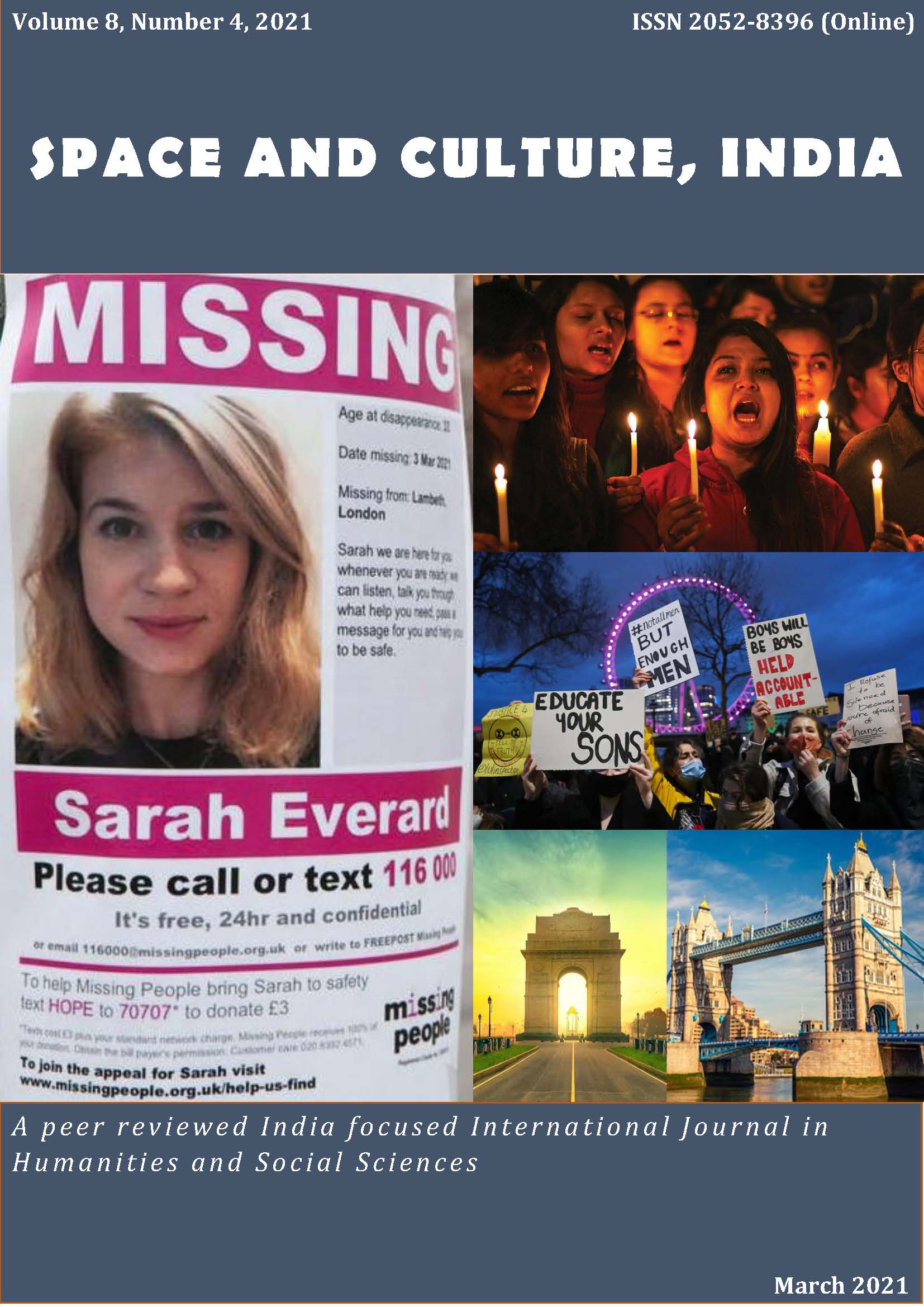Impact of Flood on the Socio-Economic Conditions in the Southern Part of Kamrup District, Assam

Abstract
Flood causes extreme loss of infrastructure and human life; besides it also propagates the condition of poverty and unceasing marginalisation of the affected region from development. This study elucidates how flood contributes to the socio-economic conditions of the rural people living in the Southern part of the Kamrup district of Assam. It focusses on flood hazard zoning and flood vulnerability analyses that are delineated based on the data collected from the Moderate Resolution Imaging Spectroradiometer (MODIS) Near Real-Time (NRT) Global Flood Mapping Product Portal. Flood hazard zoning of the study area is done using Multi-Criteria evaluation method based on rainfall distribution, slope, drainage density, population density, soil type, elevation, flow accumulation, roads, and embankment utilising Cartosat DEM and IRS P6 LISS III data. The zones are identified as actively flooded, chronically flooded, and occasionally flooded zones, which affects 39.4 per cent, 12.9 per cent and 26.1 per cent population respectively covering 1189.2 sq. km, that is, 56.5 per cent area of the study region. The flood vulnerability assessment of the study area is done at village and ward level adapting geospatial assessment in a GIS environment. The findings of the research are generated through observations, key informant interviews with the rural population surveying 1420 number of households. It reveals that 200 villages are affected by floods every year that constitutes 76.6 per cent households and 78.4 per cent of the population of the study area.
Keywords
Floods, Flood Hazard Zones, Vulnerability Assessment, GIS, Thematic Maps, Kamrup District, Assam, India
References
- Assam State Disaster Management Authority. (n.d.) Hazard and vulnerability profile.
- http://sdmassam.nic.in/hazardous.html
- Birkmann, J. (2006). Measuring Vulnerability to Promote Disaster-Resilient Societies:
- Conceptual Frameworks and Definitions. In J. Birkmann (Ed.), In Measuring
- Vulnerability to Natural Hazards: Towards Disaster Resilient Societies (pp. 9-54).
- United Nations University Press.
- https://collections.unu.edu/eserv/UNU:2545/pdf9789280811353.pdf#page=36
- Das, I. (2020). Geomorphic Hazards and Management in the Southern part of Kamrup District, Assam [Doctoral dissertation, Gauhati University]. Shodhganga: a reservoir of Indian theses @ INFLIBNET. http://hdl.handle.net/10603/267679
- Department of Water Resources, Government of Assam, India. (n.d.). Flood & Erosion Problems. https://waterresources.assam.gov.in/portlets/flood-erosion-problems
- Dhar, O.N & Nandargi, S. (2004). Floods in North Indian River System. In K. S. Valdiya (Ed.), In coping with natural hazards: Indian context (pp. 104-123). Orient Longman.
- Goswami, D. C. (1985). Brahmaputra River, Assam, India: Physiography, Basin Denudation,
- and Channel Aggradation, Water Resources Research, 21(7), 959-978. https://doi.org/10.1029/wr021i007p00959 DOI: https://doi.org/10.1029/WR021i007p00959
- Hazarika, P. (2016). Flow variability channel changes and associated hazards of Noa Mangaldoi river system, Assam [Doctoral dissertation, Gauhati University]. Shodhganga: a reservoir of Indian theses @ INFLIBNET. http://hdl.handle.net/10603/184028
- Ministry of Home Affairs, Office of the Registrar General & Census Commissioner, India.
- (2011). District Census Handbook.https://censusindia.gov.in/2011census/dchb/DCHB.html
- Mirza, M. M. Q., Warrick, R. A., Ericksen, N. J., & Kenny, G. J. (2001). Are floods getting worse in the Ganges, Brahmaputra and Meghna basins? Environmental Hazards, 3(2), 37–48. https://doi.org/10.3763/ehaz.2001.0305 DOI: https://doi.org/10.3763/ehaz.2001.0305
- MODIS Near Real-Time Global Flood Mapping Project. (2017). National Aeronautics and Space Administration. http://oas.gsfc.nasa.gov/floodmap/
- Morrow, B.H. (2008). Community resilience: A social justice perspective. Community &
- Regional Initiative, Report Number 4. doi: 10.13140/RG.2.1.1278.9604
- Sarma, J. N. (2005). Fluvial process and morphology of the Brahmaputra River in Assam, India. Geomorphology, 70(3–4),226–256. https://doi.org/10.1016/j.geomorph.2005.02.007 DOI: https://doi.org/10.1016/j.geomorph.2005.02.007
- Schmidtlein, M. C., Deutsch, R. C., Piegorsch, W. W., & Cutter, S. L. (2008). A Sensitivity Analysis of the Social Vulnerability Index. Risk Analysis, 28(4), 1099–1114. https://doi.org/10.1111/j.1539-6924.2008.01072.x DOI: https://doi.org/10.1111/j.1539-6924.2008.01072.x
- Sharma, SVSP., Srinivasa, R. G., Bhat, C.M., Manjushree, P. & Bhanumurthy, V. (2012). g. Bulletin of the National Natural Resources Management System. 87-91. https://www.researchgate.net/publication/260085195
- Singh, O., & Kumar, M. (2017). Flood occurrences, damages, and management challenges in India: a geographical perspective. Arabian Journal of Geosciences, 10(5). https://doi.org/10.1007/s12517-017-2895-2 DOI: https://doi.org/10.1007/s12517-017-2895-2